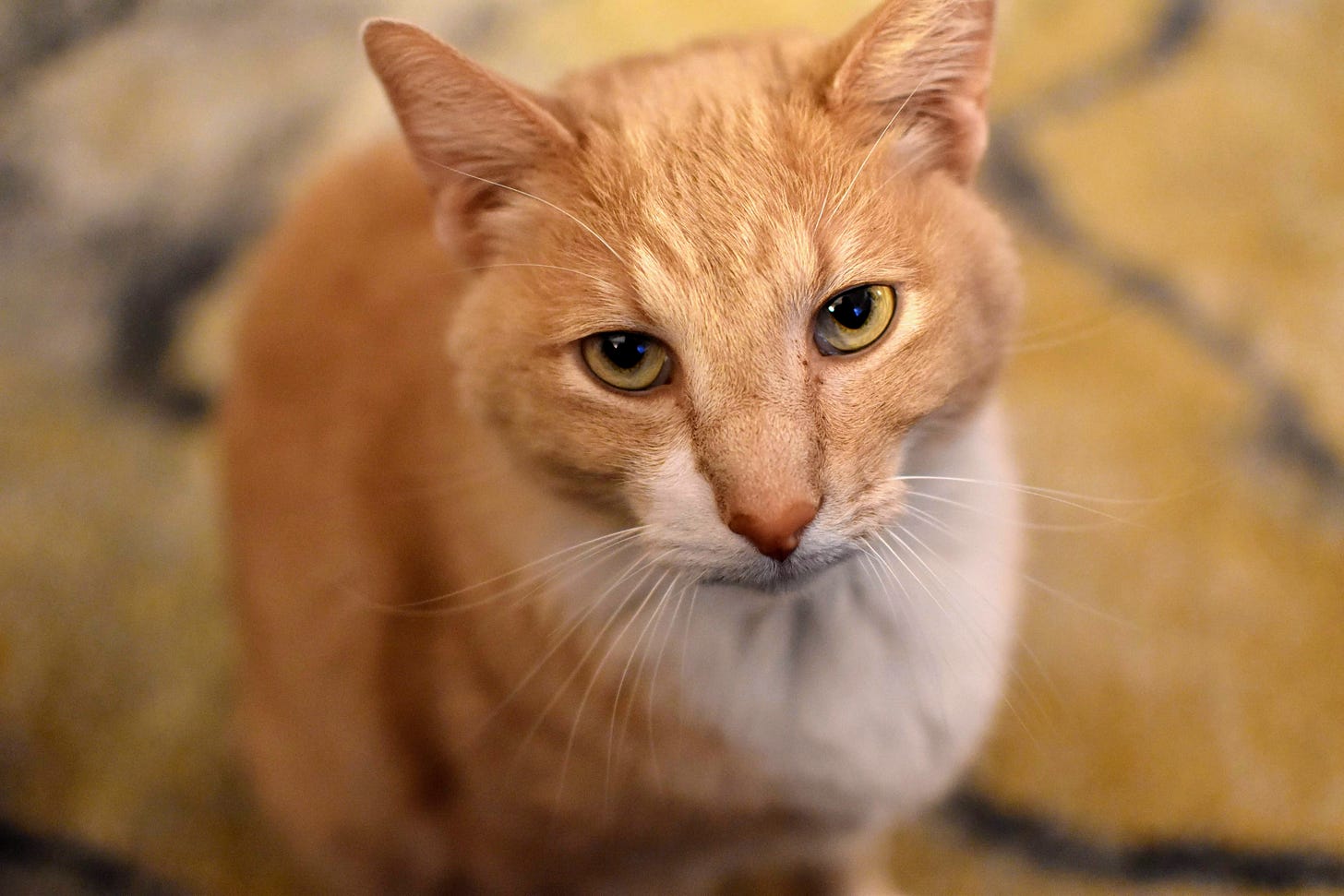
March finally ended. The three of us here are relatively healthy. My daughter’s morning routine now mostly involves face-painting while we adults get ready. Then she spends the rest of the day painted, and we scrub it all off at bath-time. Some mornings I hide the face-paint and we play with LEGO blocks instead.
I’ve spent most of this week teaching (it’ll ultimately be a two week class). It’s been odd going 100% remote, but not bad. I only have 6 students to track, and they’re all professional software developers who work at the same company and are switching to a new (to them) programming language. I’m there as the domain expert in that language to help them make the transition faster.
When I taught computer science at the university, I did a lot of lecturing. It was an interactive lecture, but a lecture nonetheless. This class is almost entirely questions and discussions. The students do pre-reading (I’m writing a textbook for this class and future classes, having decided that none of the books I had on hand were quite what I wanted) and some exercises, then they come to class. We talk about the reading, primarily by me asking questions that mix fact recall with higher-order thinking, then we handle their questions, then we look at code from the exercises they completed.
After that, we break for a few hours (this way they can apply what they’ve learned, and do it all again.
It’s not quite the Socratic method, but I have appreciate the feeling of uncovering understanding, rather than covering material. It’s also been fun writing the text (which has crested 200 pages, though much of that is source code) and designing exercises. A lot of programming books tell you what something does, but not why or when you might use it. I’ve appreciated the chance to be a little opinionated, and also really tease out my own understanding (and misunderstanding).
I love teaching, and in particular creating moments where students make connections they otherwise might not have made. And also it’s been hard, especially teaching the class for the first time while in a global health crisis (even if my immediate family is all healthy, everyone’s lives are disrupted).

After this course is done, I’m going to write another book about software development. But this one will be on my own time, rather than for a client, and so I’ll be able to share it with you.
100% Remote and Autonomous Professional Learning and Development
I wrote a thing this week (around all of my teaching and textbook writing) about a professional development method I cribbed from public schools and reworked for general business contexts.
The biggest problems most teams face is the disjunct between “knowing” and “doing” – we know we need to change how we do things, but we haven’t done so yet and may never have the time or chance to do so. Most of my work lately is on closing that gap.
I don’t think most professional development opportunities (particularly things like conferences, seminars, and lightning talks) are all that useful because it’s usually a good deal of time before you get to try out what you learned.
So instead of just consuming information, the professional development methods I’ve been using all involve immediate directed practice.
“Don’t kid me about pizza, Dad!”
My kiddo has taken to asking me to kid her, which usually means making up wildly false statements to tell her. Then she says “Nooooooooooooo” and corrects me, cackling.
But some things are too serious to joke about. For instance, that instead of eating pizza the regular way, we’re going to have pizza soup. That one was too mean (she hates soup at this time, along with most other foods). But lots of other jokes are weirdly funny to her.



My friend Rob (in the above tweet), introduced me to the theory of benign violations, that is, that jokes are funny because they both break some expectation and are simultaneously safe for the viewer. When I talk in a silly voice while pretending that my finger is a mustache, that’s a violation of how people normally talk, but completely safe. Joking that instead of pizza we’re having soup, however, puts my little toddler’s threat defenses up on high alert.
High. Alert.
Wilderness
Because I am working from home, and because we are limited in what we can do with other people, we have been going on a lot of walks. Some of the walks are around our neighborhood, and some are in the various parks not too far from our house.
Growing up, I used to go biking along single-track trails in a wonderful bunch of acres of scrub pine and sandstone bluffs. It wasn’t truly remote (and in fact was in the middle of a fairly sizable city), but it felt remote. As an adult, I miss that feeling of being alone in nature, of knowing that even if I saw other people, I’d only see them for a few minutes before they (or I) dipped over the next hill and out of sight.
This essay, “Why We Wish for Wilderness” (Alex Hutchinson), captures that yearning for wilderness, and also the complexity (and loaded-ness) of the idea of wilderness.
That’s all for this week, I think. Please be well. And of course you can subscribe, if you feel like.
In closing, the cat would like you to wash your hands.

He also wants the kiddo to stop tackling him, but we’ll get there when we get there.



